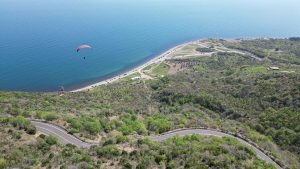Daphne Joy, the ex-girlfriend of 50 Cent, has been at the center of controversy lately. She was recently named as the ‘sex worker’ mentioned in a $30 million lawsuit against Diddy, claiming that the hip hop mogul paid her for sexual services. Joy has vehemently denied these claims and called it ‘character assassination. The situation escalated when 50 Cent accused Joy of ‘raping and physically abusing’ her, sparking a heated online battle between the two.
In response to the allegations, Joy accused 50 Cent of being absent as a father to their 11-year-old son, Sire, and of raping and abusing her. However, 50 Cent denied these claims and stated that he was taking legal action to protect his son. The conflict between the exes intensified after 50 Cent posted inflammatory comments on social media linking Joy to Diddy and implying that she turned to Diddy for support after his rejection.
The ongoing drama involving 50 Cent, Diddy, and Joy includes a $30 million lawsuit against Diddy by Rodney Jones, a former producer who claims that Joy was paid for sexual services by Diddy. Amidst these accusations, federal agents raided Diddy’s homes in Los Angeles and Miami as part of an investigation into sex trafficking, leading to further scrutiny of the allegations against him. Joy has been caught in the middle of the legal battles and has faced harsh criticism from both 50 Cent and Diddy.
Despite the tumultuous situation, Joy has maintained her innocence and claimed that the accusations against her are false. Meanwhile, Diddy has faced multiple lawsuits accusing him of sexual assault, abuse, and sex trafficking by several women, including his ex-girlfriend Cassie Ventura. The complex web of accusations, denials, and legal battles has drawn attention to the issue of misconduct in the entertainment industry and raised questions about accountability and justice for the alleged victims.
As the scandals continue to unravel, the public awaits further developments in the lawsuits against Diddy and the allegations made by Joy and other women. The conflict between 50 Cent, Diddy, and Joy highlights the complexities of personal relationships, power dynamics, and the challenges of navigating fame and fortune in the world of entertainment. The outcomes of these legal battles will likely have significant repercussions for all parties involved and contribute to the ongoing conversations surrounding sexual misconduct and abuse in the music industry.
















